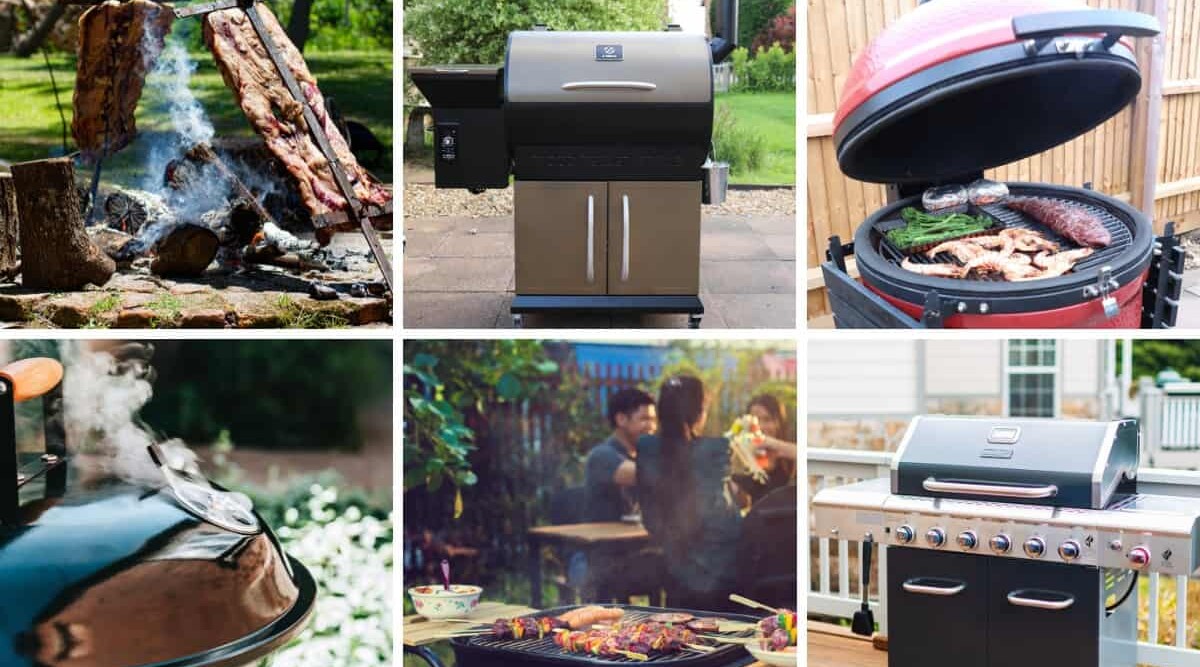
This article will break down the whole catalog of different types of grills into a half-dozen basic categories and then into the various sub-categories.
Plus, we’ll give you a summary of how each type works and their relative pros and cons before we wrap it up by helping you choose the right type of grill for you.
Because if you’ve been to your local home improvement store or whatever retailer in your area sells barbecues, you know there are many different grill types to choose from. So how are you supposed to know which is the one (or the ones) for you?
That’s what we answer here today.
Ready to get down to basics and begin at the beginning? Let’s get you talking the talk and walking the walk.
Jump to:
Types of Grills Comparison Table
Here’s an at a glance comparison table of all the different types of grills available. For a detailed discussion of every type, continue with the article below.
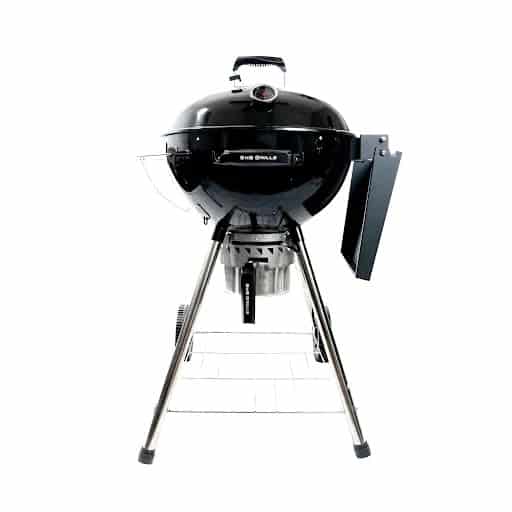
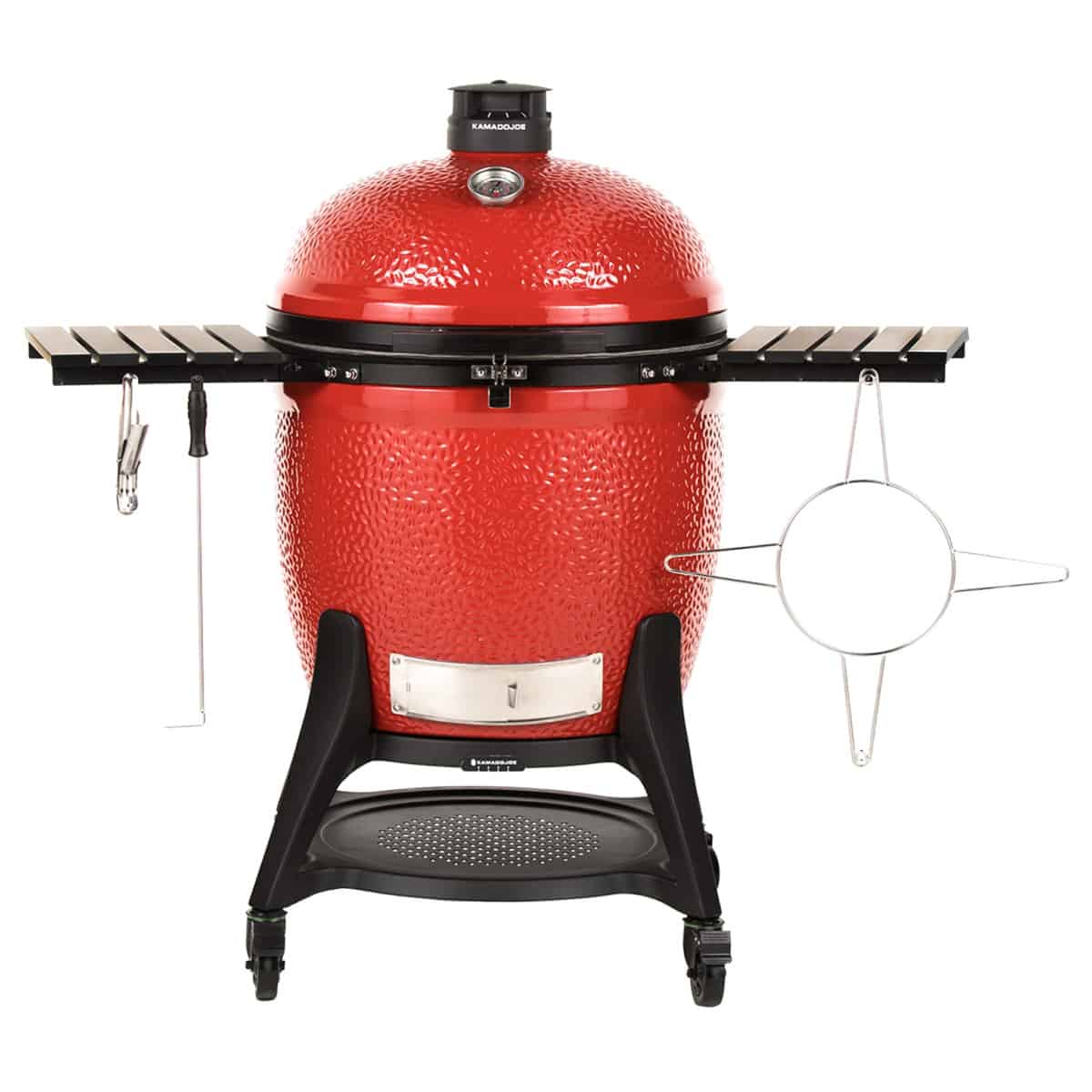
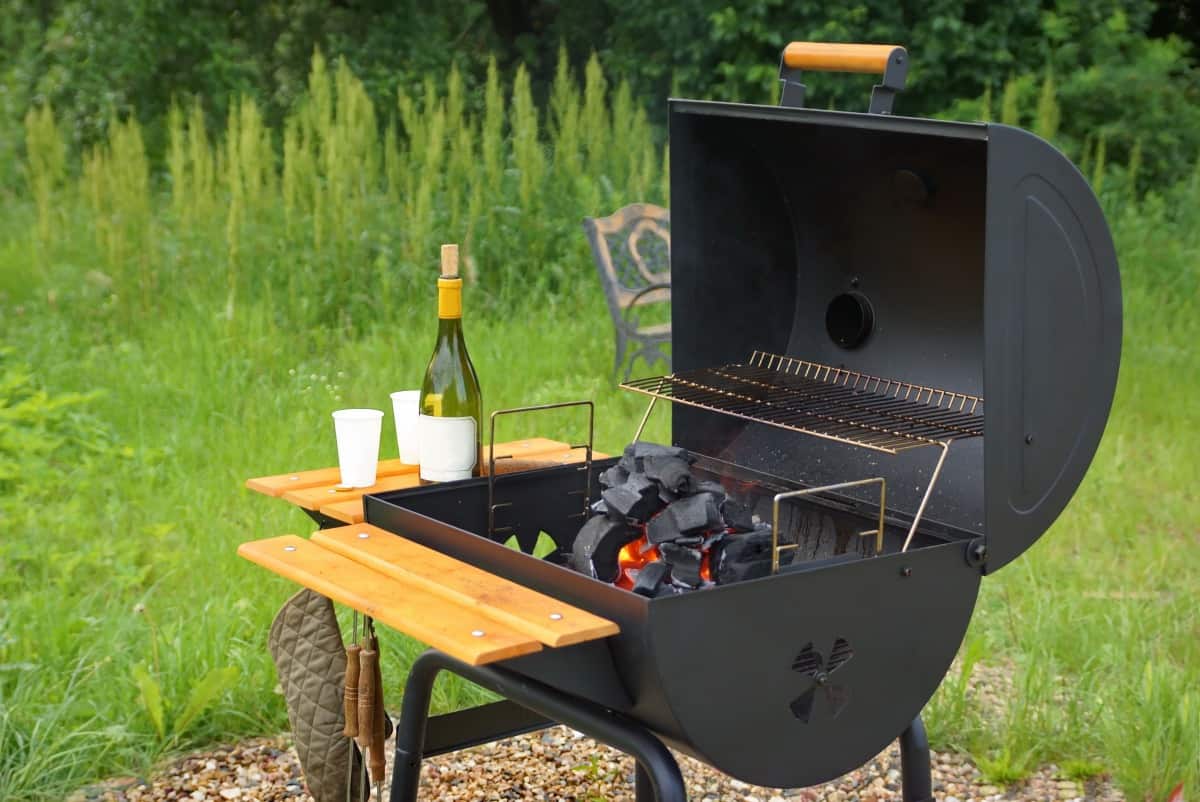
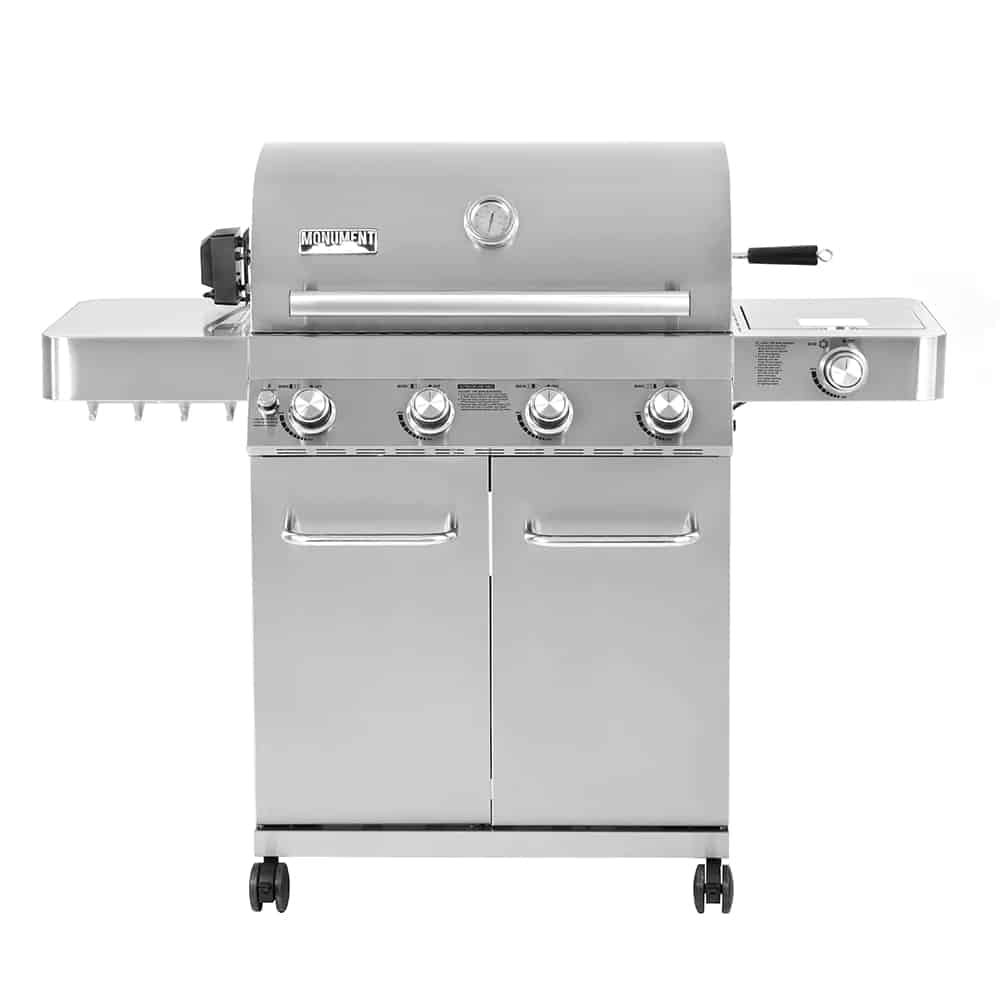
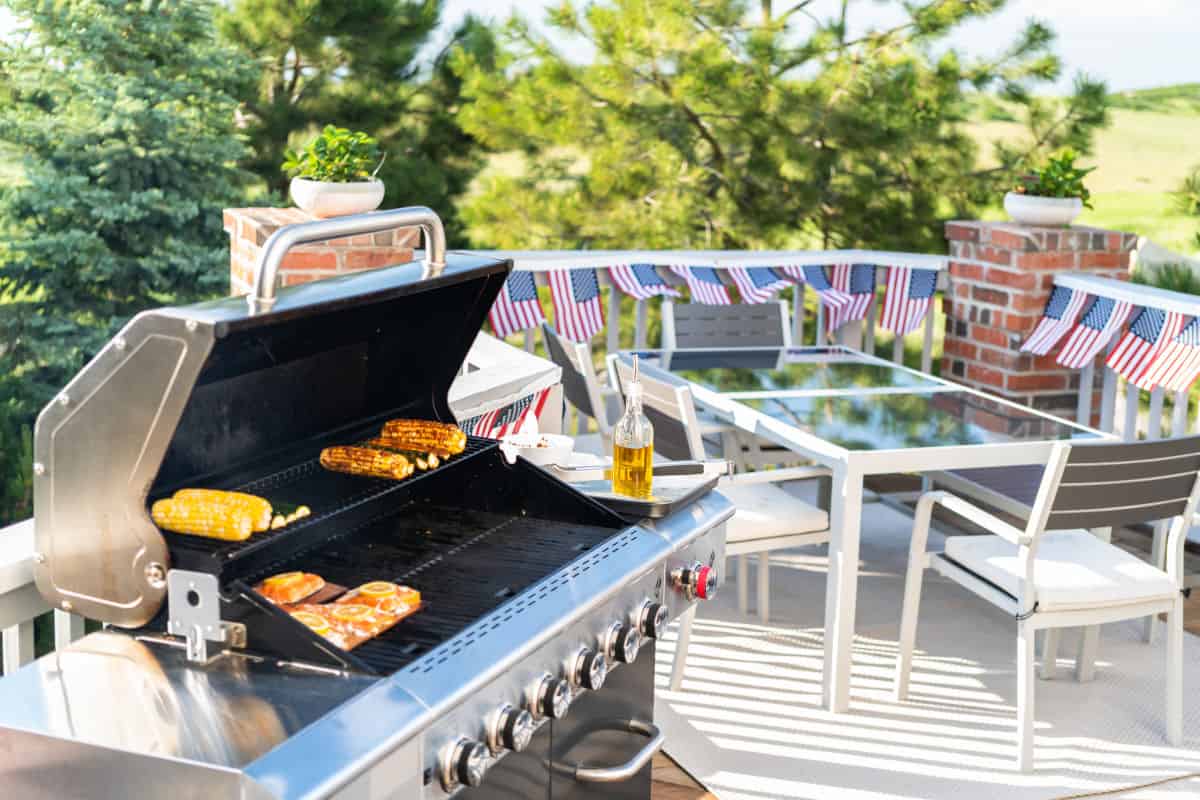
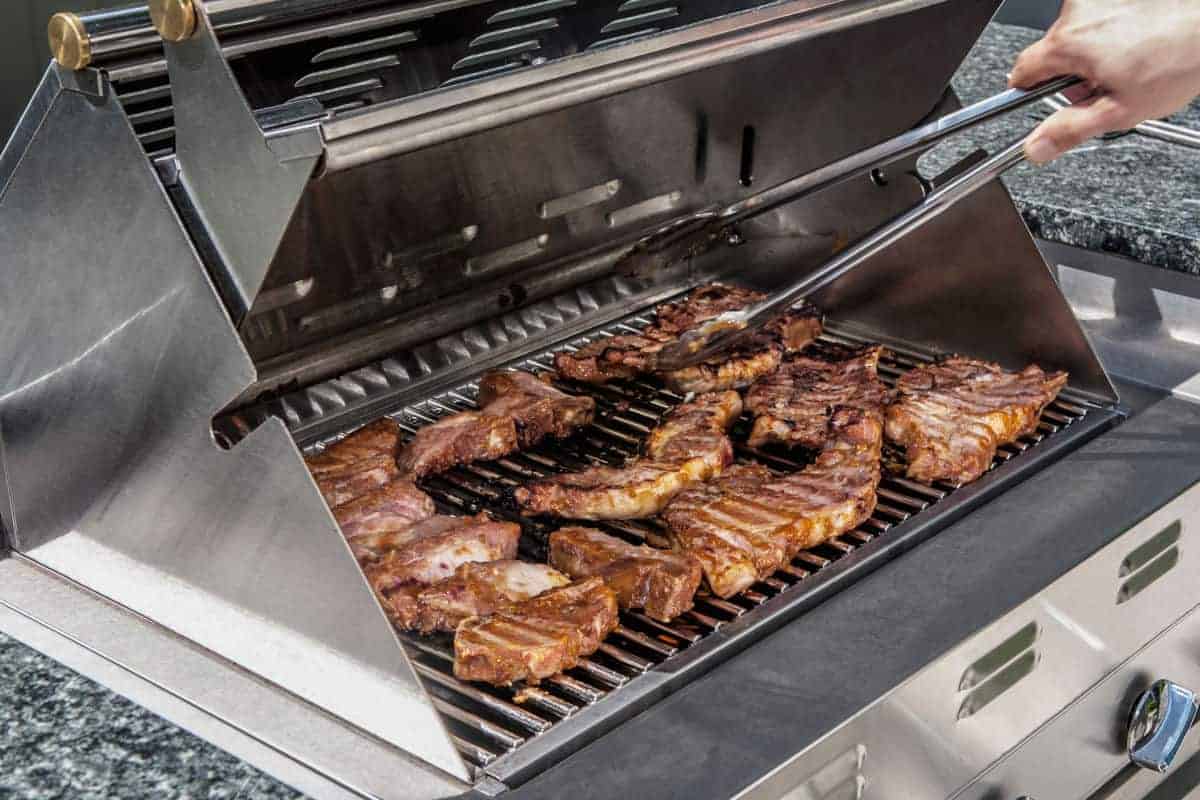
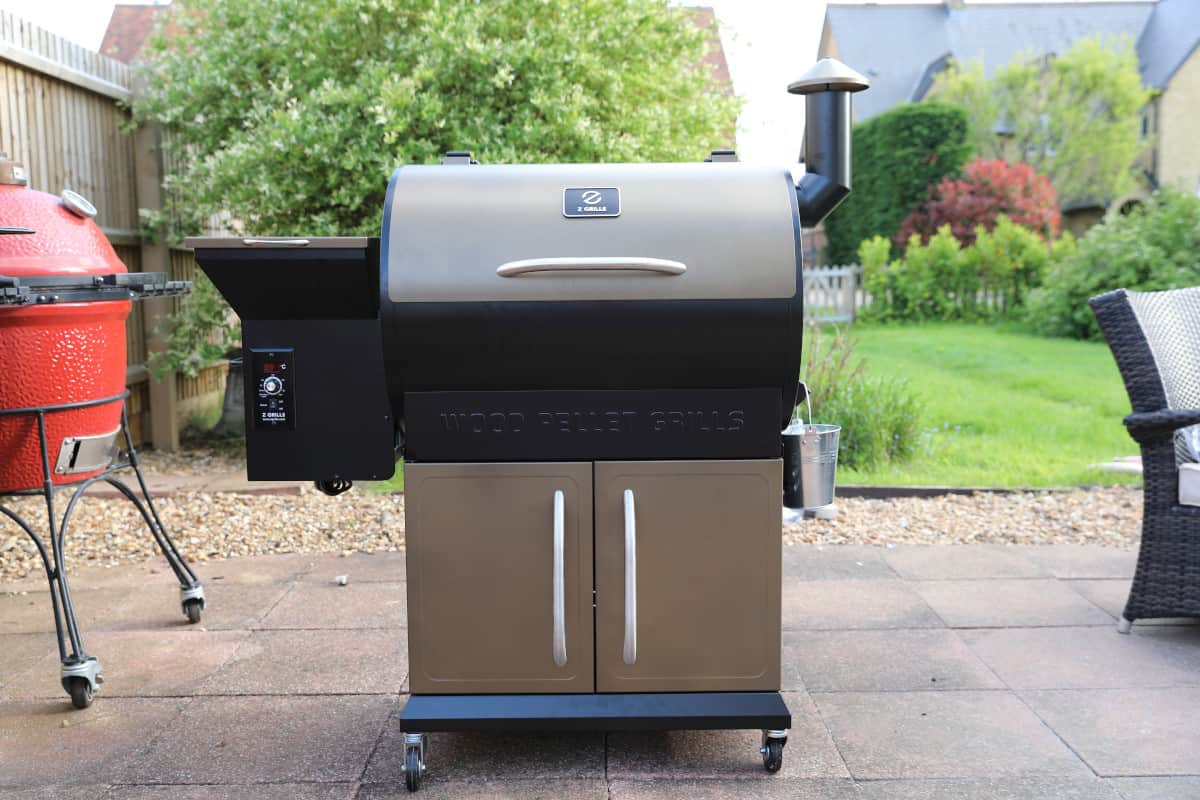
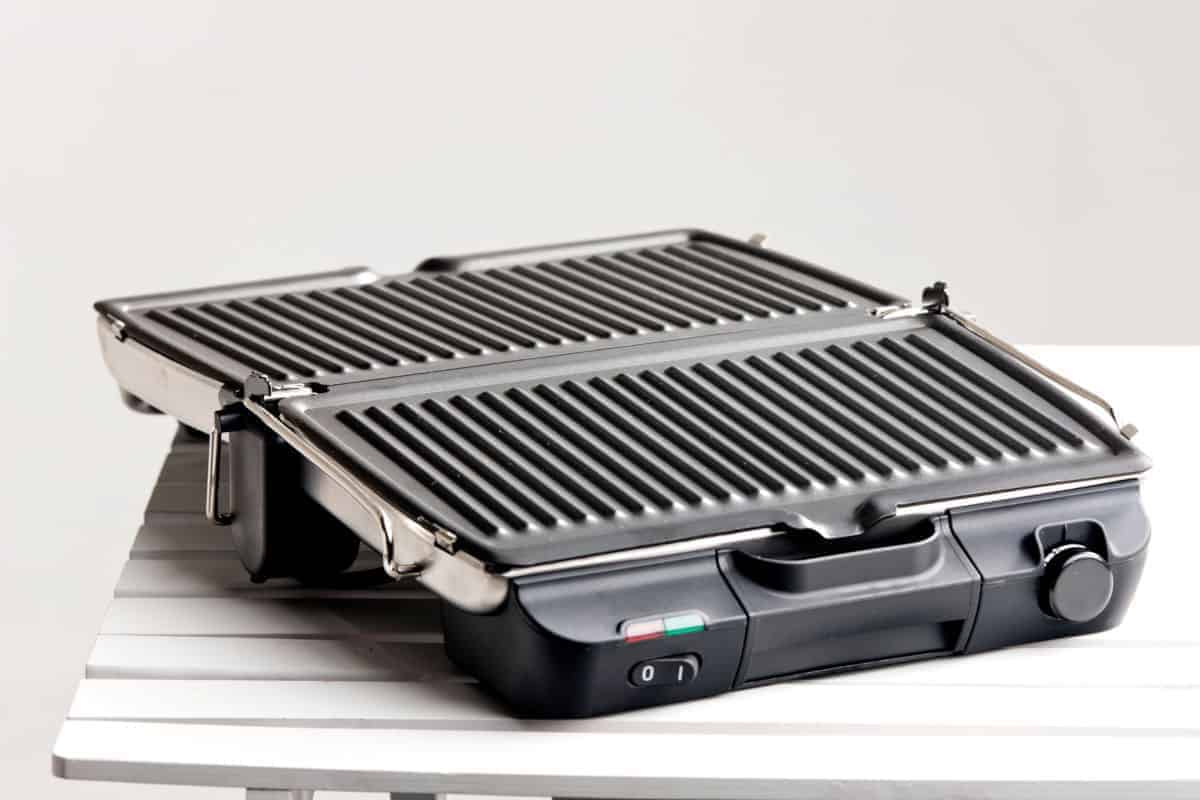
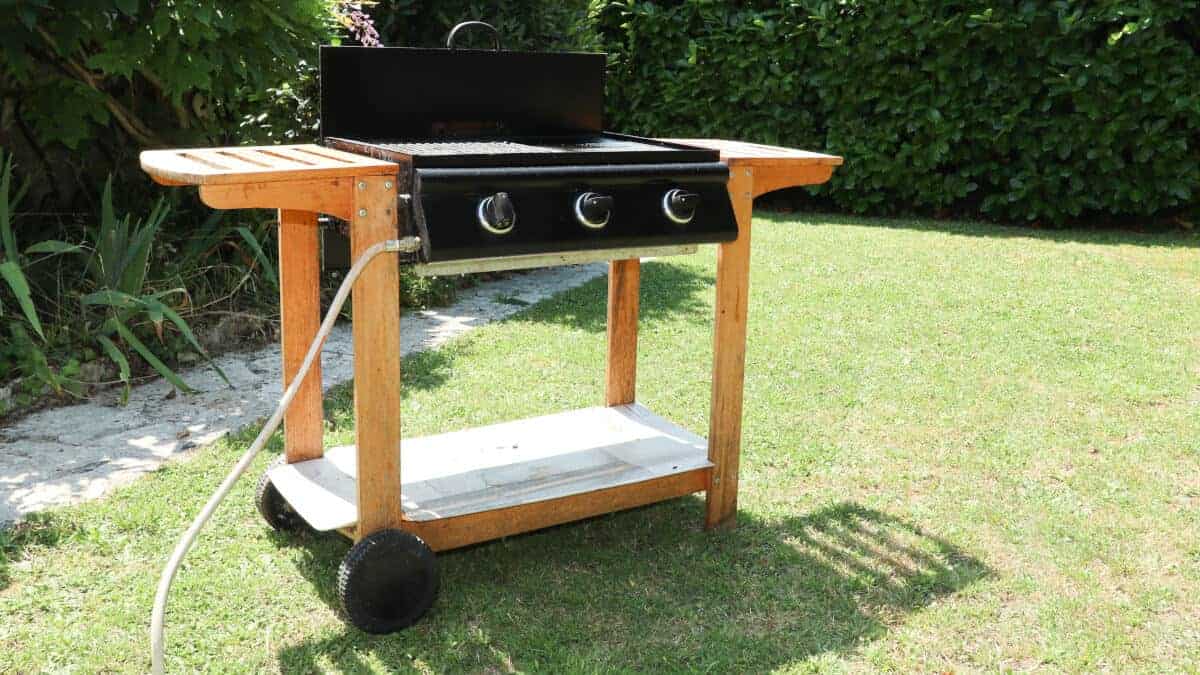
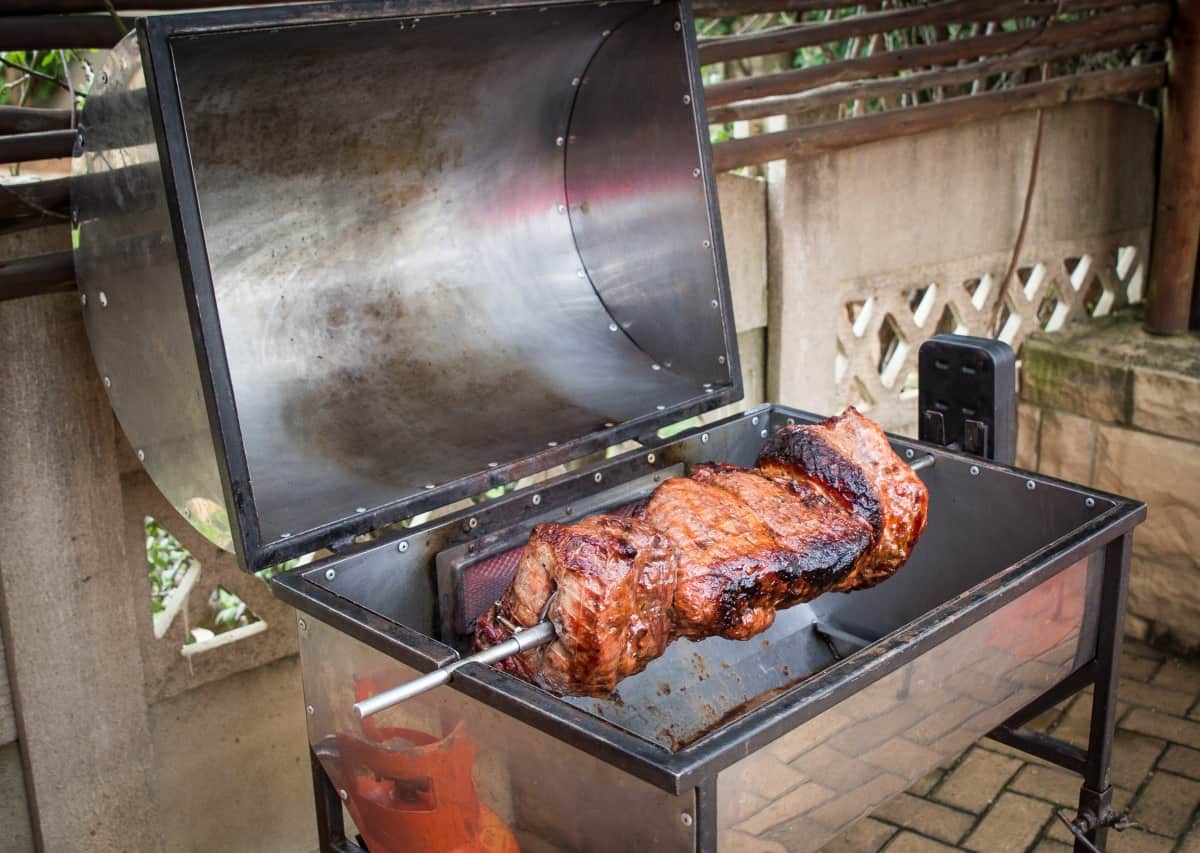
The Six Main Categories of Grills According to Steve Raichlen
Ignoring fuel type for a moment, it’s possible to sort out every kind of grill into one of six categories. These groupings are based on where the fire is positioned in relation to the food.
We believe in giving credit where credit is due: Steve Raichlen at the Barbecue Bible first conceived this list of categories. We found we couldn’t argue with his logic (we’re pretty reasonable around here), so we decided to share it with you. Here’s the link if you’d like to see his original article for more examples: Barbecue Bible’s types of grills.
Here they are, in no particular order:
Open Fire
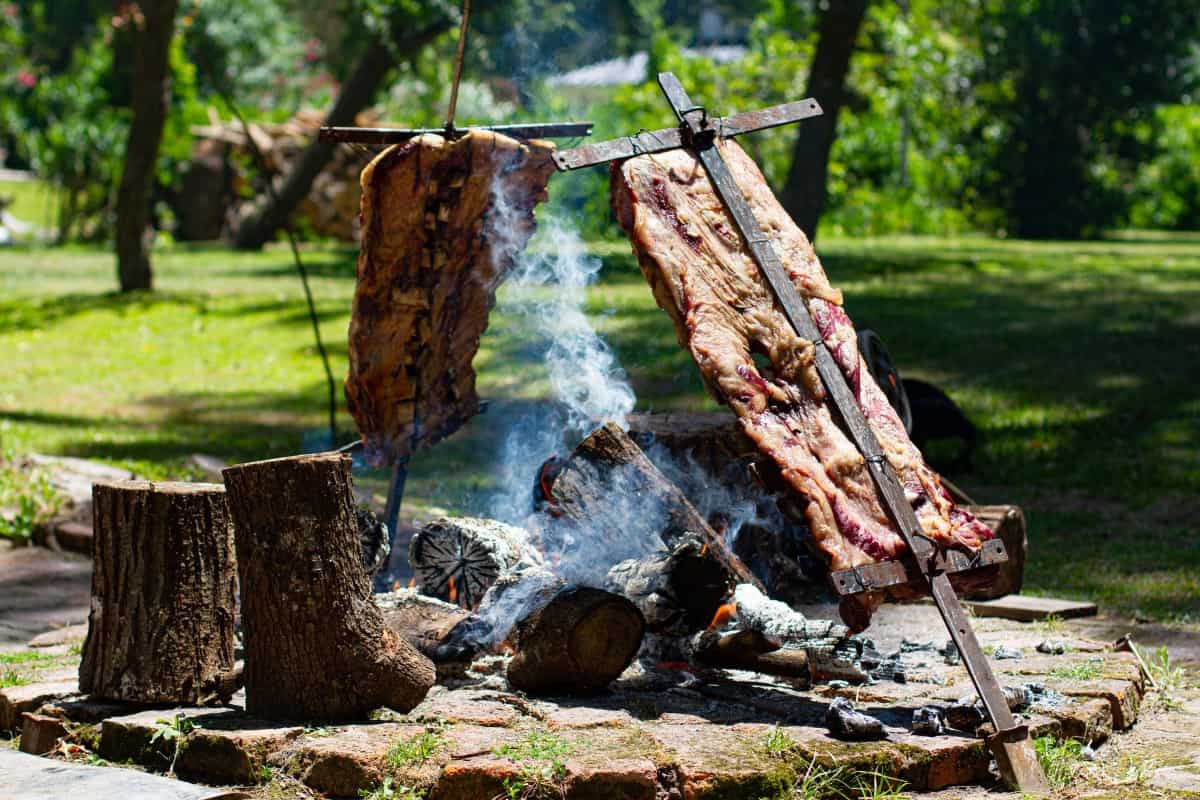
Cooking with an open fire might not traditionally be considered barbecuing. However, experiencing asado, the Argentinian method of outdoor cooking where meat is cooked on frames around a fire, might change your mind about what constitutes true barbecuing.
This method involves cooking with radiant heat rather than direct flames, allowing food to cook slowly. The food is set away from but angled towards the fire’s heat.
Typically, the fire is made in a pit, with hot coals being the primary heat source.
Think of roasting a hot dog on a stick at a campfire’s edge; that’s a form of open fire barbecuing. This technique is versatile, ideal for large cuts and whole animals.
Open Grill
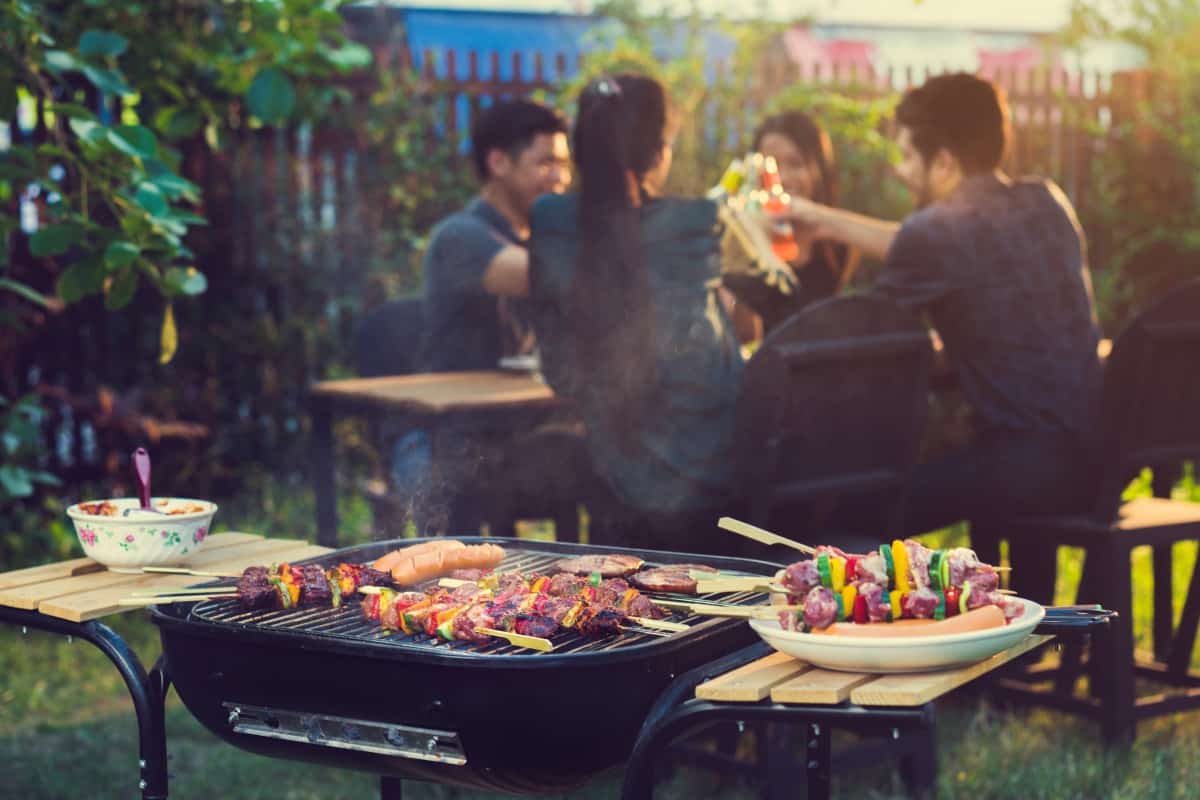
An open grill is is the most basic type of grill that most of us would recognize as a traditional grill, and features a fire at the bottom of a box or container. The food is cooked directly over the heat on grates or skewers.
This style is popular worldwide, exemplified by Japanese yakitori, yakiniku, and hibachi grills, often known in the West as tabletop grills.
Open grills are ideal for fast cooking of small meat cuts, like chops and steaks, and skewers of meat and vegetables.
Vessel or Ceramic Grill
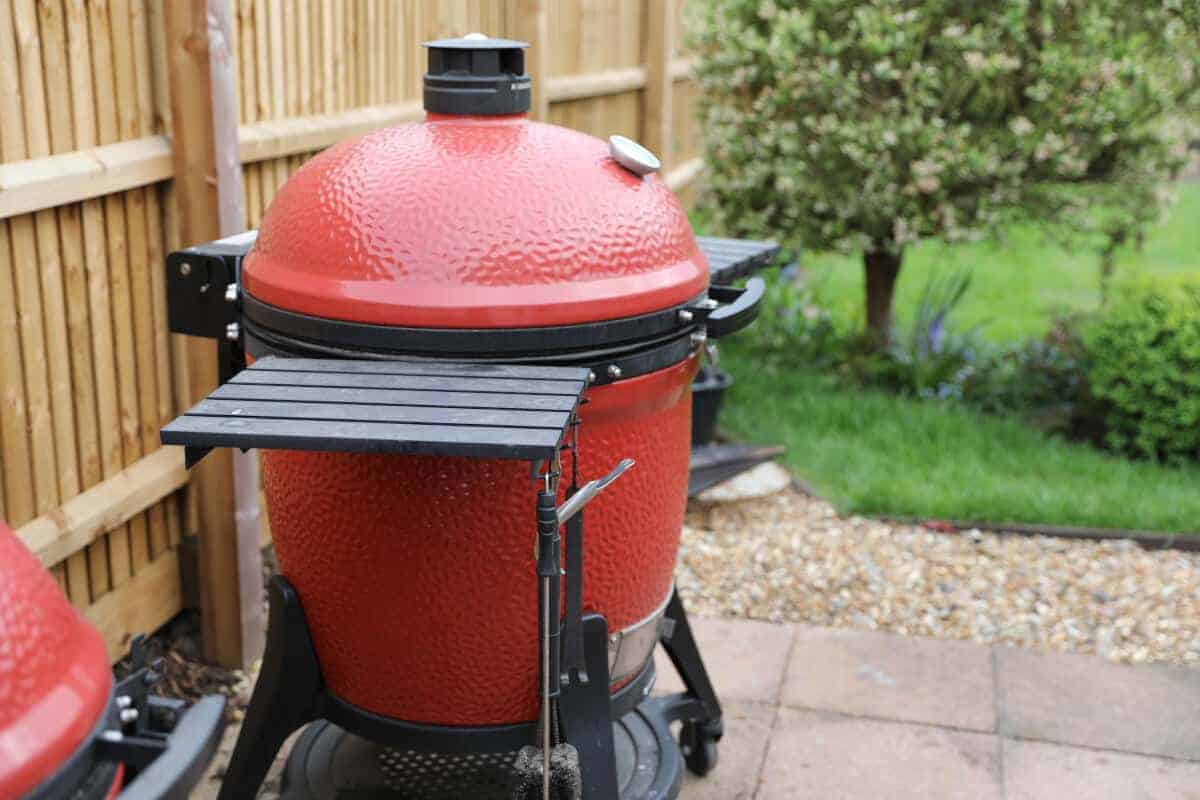
Some see ceramic kamado grills as the pinnacle of barbecuing despite often carrying a hefty price tag.
This ancient grill style, most widely recognized as deriving from South Asia and the Far East, utilizes what’s known as a vessel grill. These deep grills have thick, ceramic or ceramic-lined walls. Fire is lit at the bottom, the heat of which the walls both absorb and reflect.
Food is placed on a grate near the top, cooking uniformly from all angles due to the ceramic’s properties. Certain versions offer the option of cooking food on a spit, and even baking bread by sticking the dough to the walls.
The most recognized examples of vessel grills are the Kamado and tandoor ovens. Their versatility allows for baking, grilling, roasting, and smoking. You can prepare icons of culinary art such as naan, kebabs, ribs, pork shoulder, and roasts using these robust grills, among other delicacies.
Covered Grill
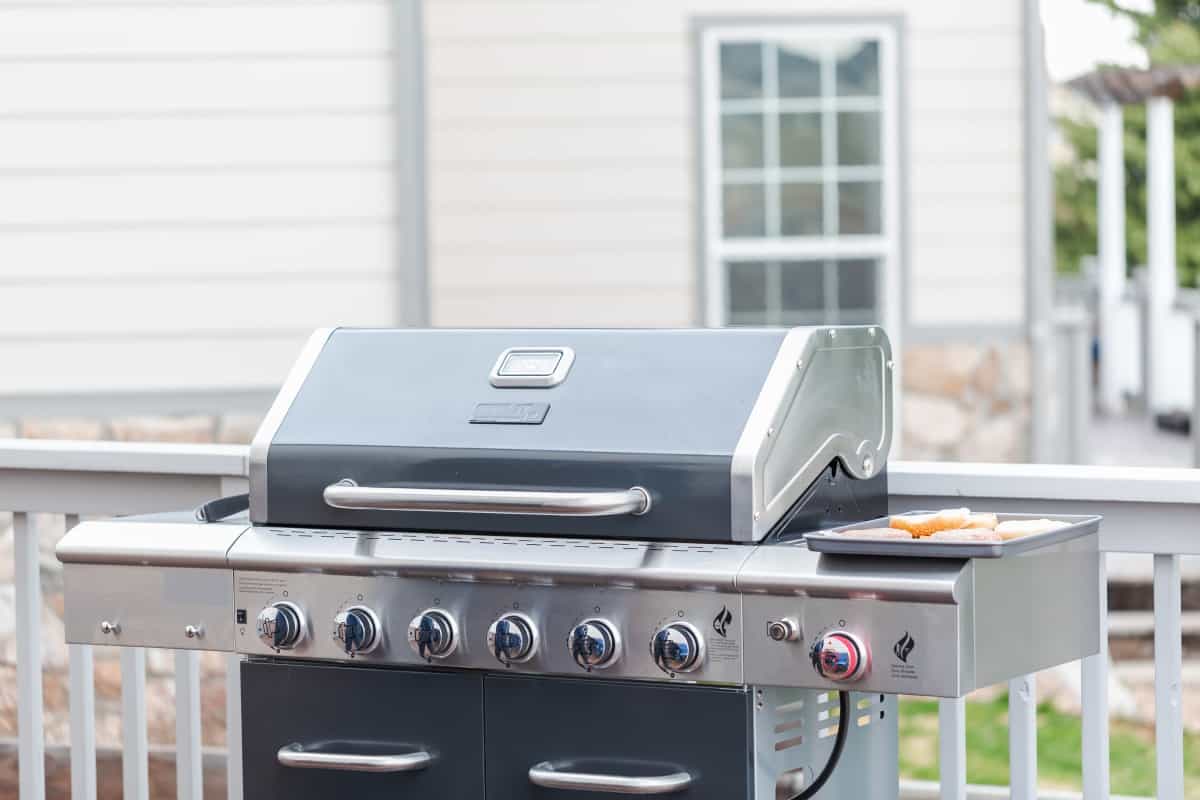
Covered grills are undeniably the most prevalent style of grill, found in nearly every backyard across developed countries. It’s essentially an open grill equipped with a lid.
The lid serves multiple functions; it captures and reflects heat back toward the grate, controls smoke, enables indirect cooking, facilitates easy temperature control, and protects against the weather.
Covered grills are available in various shapes and sizes, ranging from compact, portable charcoal kettles to expansive natural gas outdoor kitchen grills. They provide versatile cooking options, perfect for grilling steaks, chops, chicken, vegetables, ribs, burgers, hot dogs, and more.
Rotisserie Grill

While few individuals own a dedicated rotisserie grill, they are commonplace in restaurants.
A rotisserie grill operates by skewering the meat onto a rotating spindle, cooking it evenly on all sides. The heat can be either radiant or direct, and the rotisserie can be oriented vertically or horizontally.
Rotisserie chicken is a familiar dish, with numerous restaurants specializing in it. Additionally, Gyro, Donair, and Shawarma establishments often use rotisserie grills, cooking meats including lamb, goat, pork, or a variety thereof.
Some personal barbecues feature a rotisserie or offer it as an additional feature. Certain high-end models even include an infrared burner designed explicitly for rotisserie cooking.
Smoker

It’s hard to call a smoker a grill because you’re not grilling anything in the traditional sense.
Smokers use low, indirect heat to slowly cook meat and infuse them with a smoky flavor. The fire may not even be in the same chamber as the food, as with an offset smoker.
Smoking was originally a way to preserve meat for future use, but nowadays, it’s primarily used to slow roast big, tough cuts of meat until they’re melt-in-your-mouth tender. The usual suspects for smoking are briskets, ribs, shoulders, and butts.
Types of Grill by Fuel and Design
Although there are no hard rules for defining grill types (still waiting on some scientist to assign Latin names for the genus and species of each variety), here are the generally accepted categories broken down by fuel type and then by design or style.
Charcoal Grills
Let’s start off with a look at charcoal grills, the granddaddies of all grills.
Charcoal grills harken back to the dawn of barbecue and are the first introduction to grilling for many people, thanks to their low cost and simplicity. They don’t require any gas or electricity, just a bag of charcoal and something to light it.
Some consider charcoal grilling to be the only “true” way to barbecue.
Kettle Grills
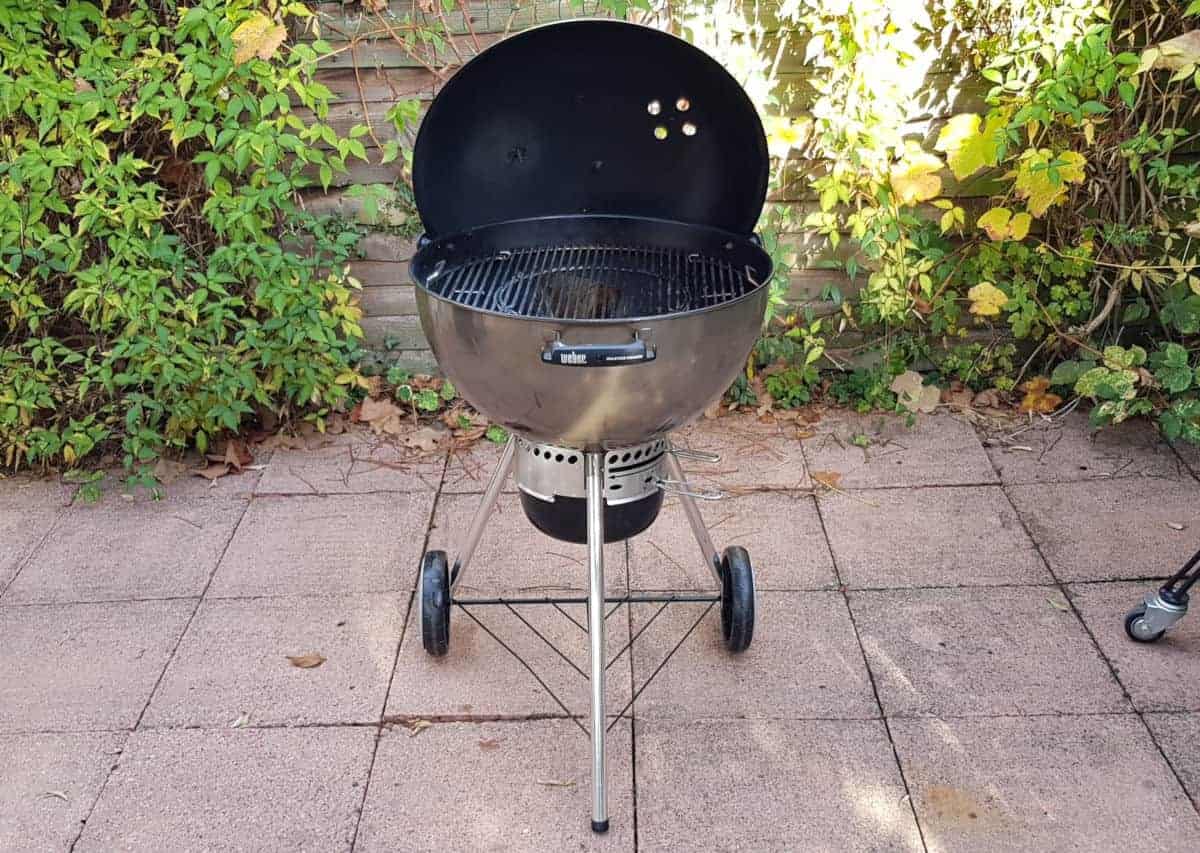
A charcoal kettle grill is the most basic of all charcoal grills, and there’s a pretty good chance you’ve owned one, or your parents did.
Versatility in Cooking Styles, Can you Smoke as Well as Grill: Because you can position charcoal anywhere you want, it is easy to set up two-zone grilling — heat on one side, meat on the other. Or, centralize the coals, stoke them up, and sear and grill over high heat. Keeping the temperature down and adding some flavor wood chips makes it possible to smoke meat and other food.
Temperatures Range, high and low: With the lid on, you may reach temperatures as high as 750F. Leave it off and/or close your vents, and you can drop as low as 150F.
How is temperature controlled: Adjusting vents to increase or decrease the rate of airflow allows you to raise or lower the temperature.
Learning curve / ease of use: Perhaps the simplest of all charcoal grills to use, the operation is very basic, and it won’t take long to master grilling on a kettle.
Convenience: Lighting the charcoals can be a painful process without an electric lighter or a chimney starter. With one of these devices, expect your coals to be lit and ready to cook on in anywhere between 5 – 15 minutes, but it’s still a chore.
Clean up of ashes can be lengthy, and it’s a good idea to invest in a stainless steel can for tossing them safely into.
Ongoing maintenance is very basic since there are no complicated parts. Just keep it covered between uses to protect it from the elements and delay the onset of rust.
Pros: Like all charcoal grills, you don’t need any additional fuel or electricity. Kettle grills are typically lightweight and portable and have a small footprint.
Cons: Messy ashes have to be removed after each cook to keep vents clear. Plus, you can’t use them in the rain, or those same ashes may turn into a sludgy nightmare. Watch your hands, by the way — the outside of a kettle grill can get really hot!
Average price range: At the low-end of the scale, you can sometimes find a kettle grill for as little as $20. A high-quality, totally tricked-out unit, however, may top $500. But, most people will probably shell out between $50–$200.
Should You Buy This Type of Grill? Ideal for casual grillers who may wish to smoke meat on occasion, people with limited outdoor space, and those who like to grill away from home.
What to look for when buying: For more efficient heat retention, look for heavy-gauge steel. Stay-cool handles are also a big plus, and many people will appreciate sturdy wheels for easy repositioning. An easy system for clearing out the ash can make your experience more enjoyable, too.
Ceramic or Kamado Grills
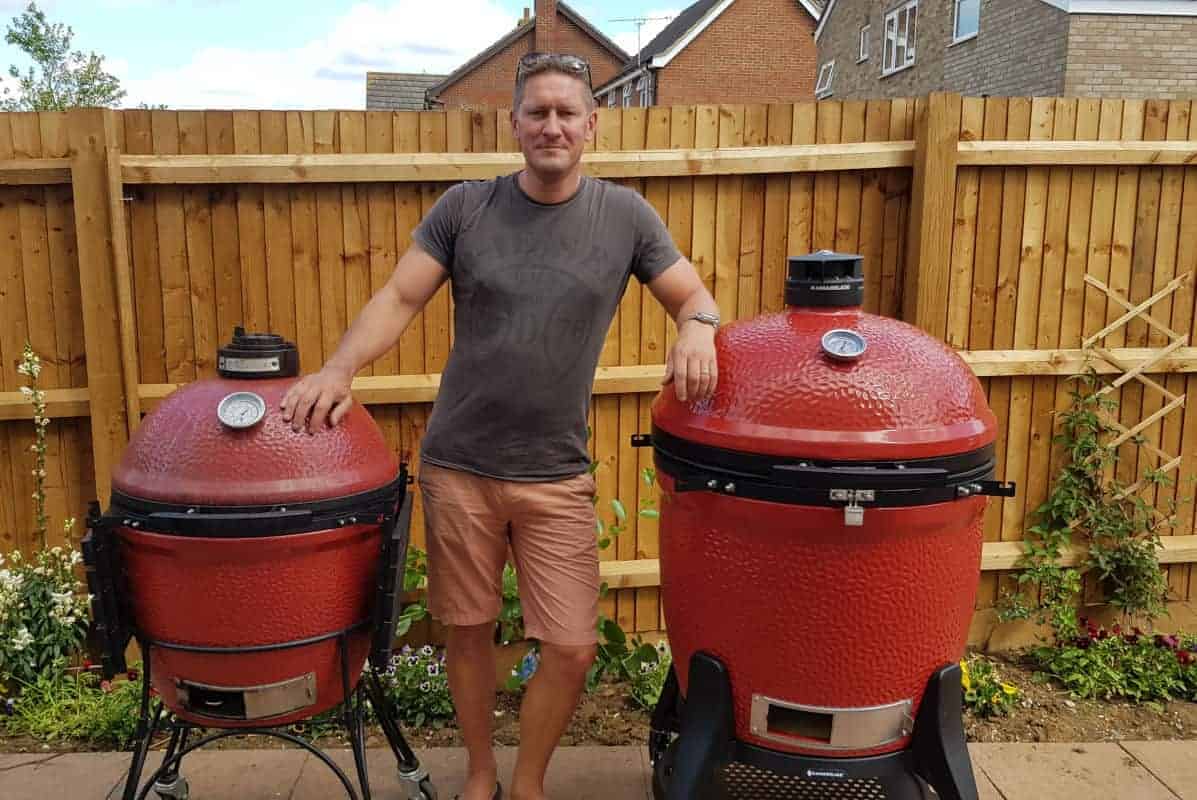
Kamado grilling has an almost cult-like following in the world of barbecue. It’s not hard to see why, frankly, considering how versatile these ceramic wonders are and how great they look. They perhaps aren’t for everyone, but they are absolutely amazing.
Versatility in Cooking Styles. Can you Smoke as Well as Grill: No grill offers as many cooking options as a kamado. Thanks to their ability to absorb and radiate heat, you can sear, grill, roast, smoke, bake — you name it, and you can do it on a kamado.
Temperatures Range, high and low: Nothing beats a kamado for temperature range: you can easily smoke at 150F or sear at 750F, plus anything in between.
How is temperature controlled: Fire needs oxygen to burn; adjusting the air vents controls the amount of oxygen that reaches the charcoal and, hence, the temperature.
Learning curve / ease of use: Mastering the kamado will take some time and practice, and some people may give up before they’ve gotten the hang of it. However, they aren’t much trickier to use once you’ve got it than any other charcoal grill.
Convenience: Lighting charcoal is never very convenient. Once lit, expect to wait up to 45 minutes for the interior to absorb enough heat to cook evenly. There’s a lot of fiddling involved to get the right temperature, too. Maintenance is mild; you’ll have to clear the firebox of ashes after each cook, and you’ll occasionally want to remove excess soot or any creosote, especially if you smoke a lot.
Pros: With so many ways to cook, you’ll never be hard up for grilling ideas. Oh, and you’ll be the envy of many, many grillers.
Cons: Thanks to their enormous weight, kamados are very difficult to move around. Plus, the ceramic material cracks easily if they’re dropped, so if you do want to move one, you’ll need to do so very carefully. To work at peak efficiency, the lid seal has to be tight. You may need to replace the seal down the road.
Average price range: At the low-end, you might get one for about $300 — but we don’t recommend wasting your time with a kamado that cheap. Ultra high-end choices will set you back $3500+. It’s more reasonable to expect to pay $700 – $2000.
Should You Buy This Type of Grill? Kamados are suitable for advanced grillers who are looking for new challenges and the ultimate charcoal experience. They are also well suited to foodies and people who love to cook, thanks to the many cooking style options kamados offer.
What to look for when buying: Stick with trusted names like Kamado Joe and Big Green Egg, and you’ll be fine. Just choose the size that best suits the type of food you want to cook. We highly recommend purchasing a dedicated stand for convenience and safety.
Barrel Type, Traditional (Look Like Oil Drums)

One look at a barrel-style grill, and you’ll know where it gets its name. The first grills of this sort were, in fact, made from discarded oil drums cleaned out and cut in half lengthwise to create a firebox and a lid. People still DIY them worldwide, but those of us without a blowtorch can get them factory-made as well.
Versatility in Cooking Styles. Can you Smoke as Well as Grill: It is possible to smoke on a barrel-type grill, but their primary purpose is straight-up grilling. For true smoking, a small firebox is added to the side of the barrel to create an offset smoker.
Temperatures Range, high and low: The temperature range is similar to a kettle grill, though hitting the top end is difficult because of the sheer size of a barrel grill. Expect an approximate range of 200F to 600F.
How is temperature controlled: As with all charcoal grills, the only way to control the temperature is by controlling the airflow. Vents on the sides of the lower section allow air to be drawn in and across the charcoal; more air equals more heat and vice versa. One can also open the lid to drop the temperature rapidly.
Learning curve / ease of use: Barrel type grills are very basic and relatively easy-to-use. There will be the usual “getting to know you” period while you learn to adjust the vents effectively. Also, their large size takes some getting used to — there will be a lot of fire and food to manage at once.
Convenience: Lighting charcoal is always a chore, and if you’re using the whole grill, you’ll need to light a lot of it. Expect to take around 30 minutes to be fully ready to grill. Clean-up may be time-consuming, especially if you’ve cooked a lot of food; there is a lot of surface area on the grates to scrape clean, and they don’t come with handy ash clean-out systems.
Pros: Barrel grills are the ultimate choice for big barbecue parties and feeding a crowd. They are simple to use and don’t require any special care.
Cons: Don’t expect to toss your barrel grill in the back of your truck to take to the cottage or go tailgating — they’re huge! In fact, they aren’t even convenient for moving around your yard.
Average price range: Price will vary with the build quality, but the average will be between $150 – $400.
Should You Buy This Type of Grill? The huge amount of primary cooking surface makes barrel type grills ideally suited to cooking either a lot of small things or several large things. If you host large gatherings frequently, you’ll love being able to cook 20 burgers simultaneously. Also, there are a lot of cubic inches under the lid, so if you like big cuts (and you cannot lie) and whole turkeys, this grill’s for you
What to look for when buying: Heavy-gauge steel will help hold in the heat and make you use less charcoal. Since the lid will be hefty, look at the hinges and make sure if they look up to the task. Check for cast iron grates for confidence in their ability to last and hold the weight of a lot of meat.
Gas Grills
Many grillers appreciate the convenience of using a gas grill. Purists may prefer charcoal, but it is impossible to deny the appeal of a gas grill. Additionally, there are many styles available to suit your needs, everything from portable units for tailgating up to massive outdoor kitchen installations.
Propane
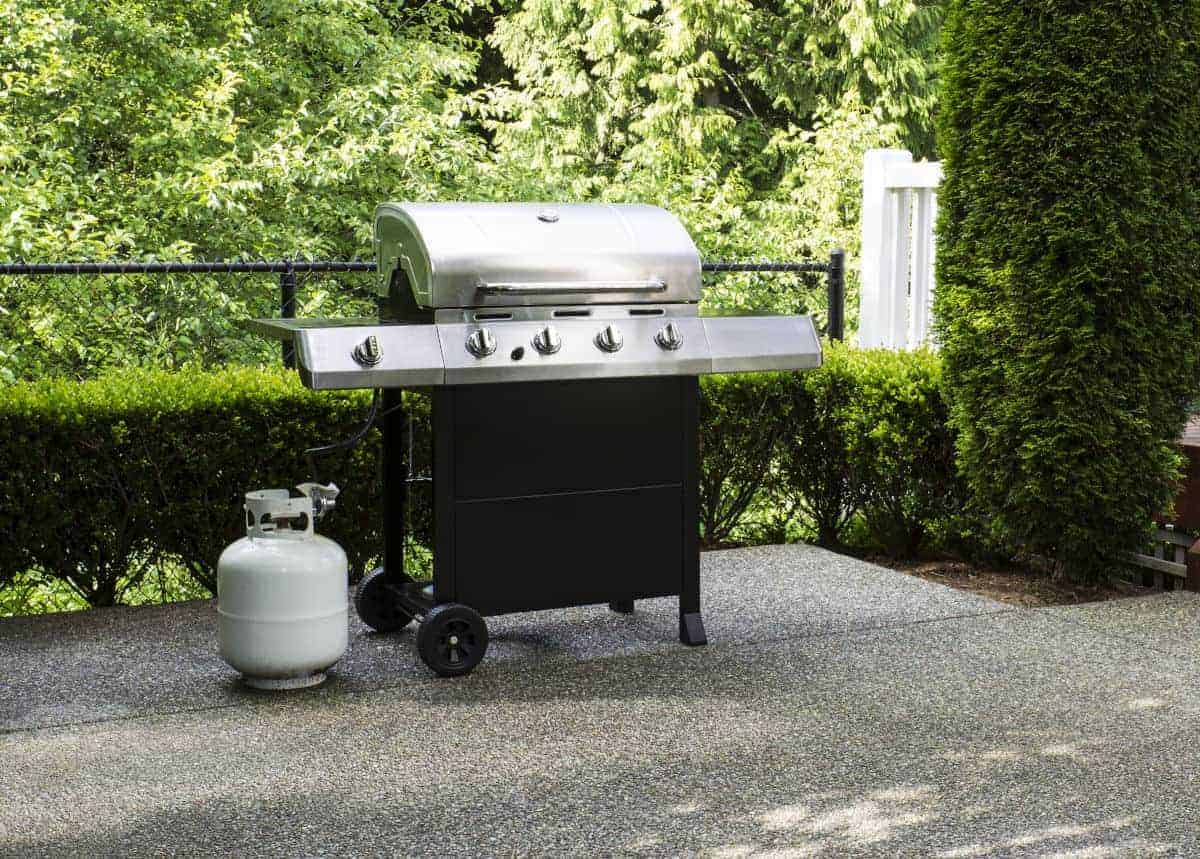
Fuelled by propane tanks, this category of grill can be found in backyards and campgrounds around the world.
Versatility in Cooking Styles. Can you Smoke as Well as Grill: Although not inherently smokers, with the use of a smoker box it is possible to smoke meat on a propane grill. But, propane grills are generally best used for straight-up grilling and searing, and perhaps some two-zone roasting.
Temperatures Range, high and low: The low-end should be about 250F, give or take 25F on virtually any grill. The high-end will depend largely on how many burners are in use and the BTUs available. Any gas grill will reach 450F, but you may be able to squeeze up to 600F out of the right grill under ideal conditions.
How is temperature controlled: Knobs such as you’d find on a kitchen stove control the flow of propane to the burners. Turning them up and down raises or lowers the temperature. Additionally, on units with 2 or more burners, you can select more or fewer burners depending on the level of heat you’re after.
Learning curve / ease of use: Since they operate just like a kitchen stove, it’s very easy to learn how to use a propane grill. The only trick is remembering to turn on the gas first, then the burners for igniting, and to the gas off first, then the burners when shutting it down.
Convenience: Propane grills light instantly, most at the press of a button or the turn of a knob. There is no ash to clean up at the end, and drippings either burn up on the burner covers or collect in a drip can. Other than scraping the grates after use, there is very little regular maintenance required.
Pros: You won’t need any wood, and there’s no messing around with dirty charcoal. Plus, you won’t have to master adjusting air vents to control the temperature inside.
Cons: Since you’re only burning propane, the only smoke flavor added comes from drippings hitting the burner covers, and that’s minimal at best. Propane levels have to be monitored to avoid running out of fuel in the middle of cooking.
Average price range: A huge range of propane grills are available, from inexpensive fold-up portables to wallet-busting outdoor kitchens that run to 5 figures. It is possible to purchase a very good propane grill in the $250 – $500 range.
Should You Buy This Type of Grill? Propane grills are great for most casual grillers, or for anyone who sometimes decides to grill at the last minute and wants to get grilling right away. Depending on the size, propane grills are also great for taking on the road thanks to the portable fuel source.
What to look for when buying: Look for heavy gauge metal to hold the heat and quality fittings that won’t rust. Are the burners good quality and likely to last? Is the grill made of cheap, chromed metal or solid, enameled cast iron? Pay attention to the stand, too; does it look sturdy enough to hold up to years of use and moving around?
Natural Gas
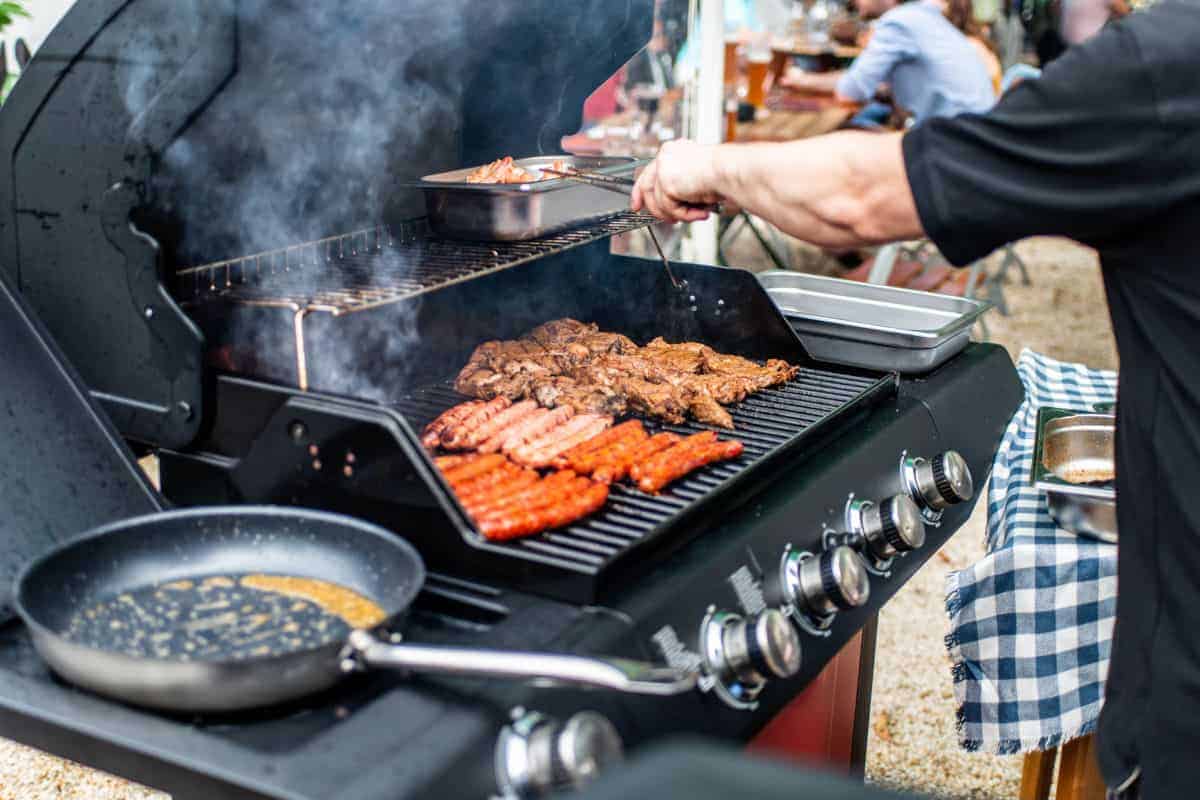
Similar to propane grills, natural gas grills use the same piped-in fuel many homeowners use to power their furnace, kitchen stove, and hot water tank.
Versatility in Cooking Styles. Can you Smoke as Well as Grill: There’s no wood used, so smoking is not possible straight out of the box on a natural gas grill. You can, however, use a smoker box and wood chips to smoke food if you so choose.
Temperatures Range, high and low: With the burners cranked and the lid down, you’ll probably peak around 550F. Low-end, smoking-range temperatures are not easy to maintain, but with some care, you should be able to hold at about 250F, perhaps a bit lower.
How is temperature controlled: Using stove-style knobs, it is easy to regulate the flow of gas to adjust the temperature up and down. For grills with multiple burners, use fewer burners for lower temperatures or more burners for higher temperatures.
Learning curve / ease of use: A natural gas grill is easy to learn and functions like a kitchen stove. Clean the grates after each use, and maybe once a year clean out the bottom of the grill. Clean-up is simple since there is no ash created, and little residue reaches the bottom.
Convenience: Natural gas grills almost invariably offer push-button ignition, making start-up simple. There’s no ash, so clean-up consists of little more than scraping the grates and occasionally removing stuck-on debris from the burner guards and the bottom of the barbecue.
Pros: Since the fuel comes from a natural gas hook-up, you will never run out in the middle of cooking. The operation is simple, and you don’t even need the strength to pick up a propane tank (which can be very heavy).
Cons: A professionally installed connection to a natural gas supply is required, and you can never position your grill further than a hose length away from the outlet. Unlike some propane grills, natural gas grills are never portable.
Average price range: Many propane grills come in a natural gas model, but you’ll probably pay a bit more for it. There are tons of choices in the $300 – $500 range. As always, you can pay a bit less, or you can pay a whole ton more, depending on size and features.
Should You Buy This Type of Grill? A natural gas grill is perfect for casual cookers who typically like to put some char marks on simple items at home while enjoying the fresh air.
What to look for when buying: Multiple burners allow for multiple temperature zones and more grilling versatility. A sturdy stand with wheels is always a boon, as are shelves and work surfaces. Cast iron grates are best, and a side burner is a nice feature to have, too.
Freestanding

This is a sub-category of gas grills; many grills will fall under this heading and others. They all have in common that they are not part of a more extensive, modular outdoor kitchen system. Frequently, they will have closed storage under the firebox, and the propane tank may be concealed here.
Versatility in Cooking Styles. Can you Smoke as Well as Grill: These grills are primarily for grilling and roasting. It is possible to do small-scale smoking with the use of a smoker box filled with wood chips.
Temperatures Range, high and low: Your average temperature range will be approximately 250F to 550F.
How is temperature controlled: Convenient knobs at the front of the barbecue control the flow of gas and consequently the flame height. Higher flames provide more heat, and the reverse is also true.
Learning curve / ease of use: There is next to no learning curve for this type of grill, save for determining how high to turn up the gas and how many burners to use for particular temperature settings.
Convenience: Ignition is instantaneous, and virtually all models feature an ignition switch or button. Even if the igniter breaks down, you can still fire it up with a single match or butane lighter. Allow a few minutes to get up to temperature. Clean-up consists of little more than scraping the grates and clearing the bottom of debris a few times a season.
Pros: Temperature control is straightforward with gas and is far less affected by wind and weather than a charcoal grill. A freestanding gas grill is generally easy to reposition in your outdoor space to take advantage of the sunshine or shelter from the elements.
Cons: Freestanding grills don’t offer as much workspace as a built-in (we’ll cover those next) and may be less feature-rich. Plus, remember that most of that storage space you think you’re getting underneath is taken up by the propane tank.
Average price range: You can pick one up dirt cheap, but you’ll get what you paid for. For a decent freestanding gas grill with a few nice features, figure on spending between $300 – $600
Should You Buy This Type of Grill? Great for grillers looking to step up their game a bit in terms of flexibility and appearance but not interested in dealing with charcoal.
What to look for when buying: Side tables for plates, sauces, and more are just about essential, and a side burner wouldn’t go amiss, either. Check for a lid that closes easily and a sturdy frame that will last. If space allows, opt for at least three burners to allow for easy set up of two-zone cooking, roasting, and so on. Consider your future needs, too; might a rotisserie attachment be a nice option down the road or some other add-on feature?
Built-In
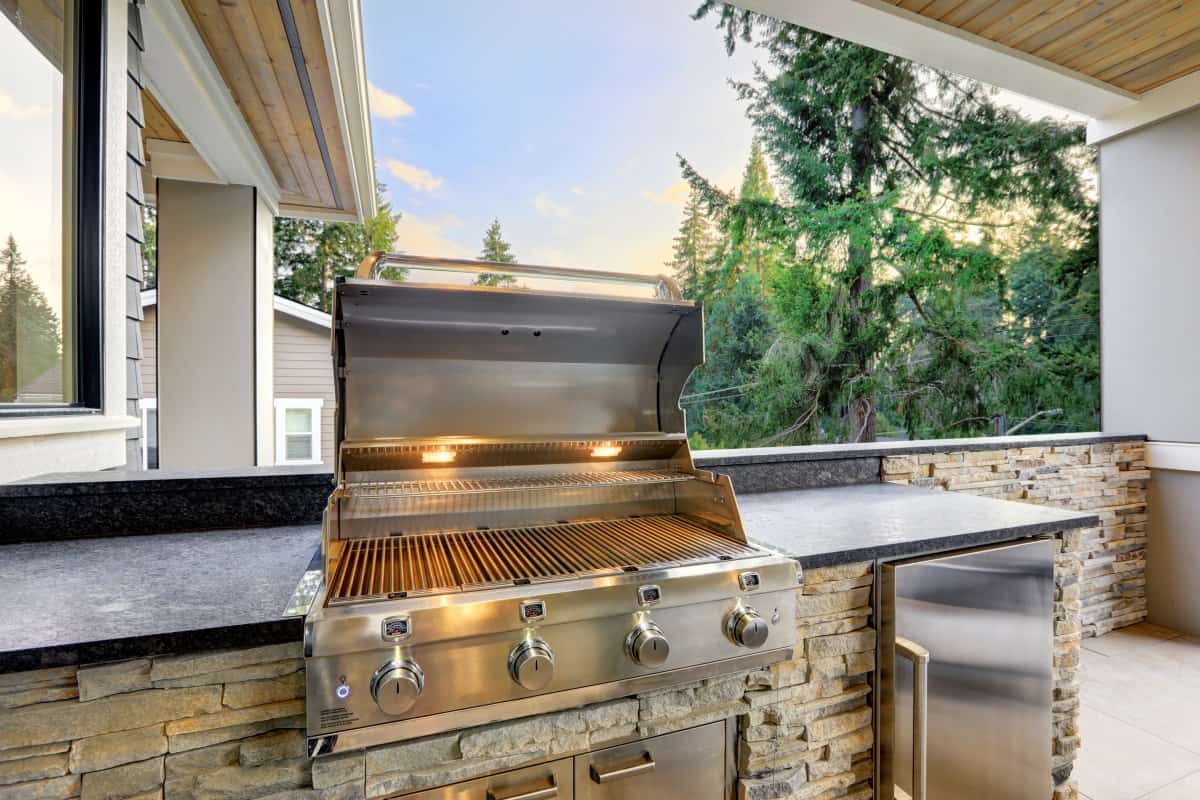
For the full outdoor kitchen experience, choose a built-in propane or natural gas grill. It’s possible to create a custom arrangement suited to your needs and your décor, and many outdoor kitchens rival the best indoor ones for functionality and beauty.
Versatility in Cooking Styles. Can you Smoke as Well as Grill: Gas grills are not well suited to smoking; expect to mostly grill and roast. With the help of a smoker box, it is possible to do a bit of smoking, though you’ll be limited in what you can do.
Temperatures Range, high and low: Built-ins function identically to their smaller cousins; temperatures achievable will range from about 250F to around 550F
How is temperature controlled: No surprises here if you’ve been following along – adjust the temperature by controlling the flow of gas with the knobs on the front of the barbecue.
Learning curve / ease of use: The learning curve will be gentle depending on the number of features you opt for. These are no more difficult to use than a gas stove or conventional oven.
Convenience: Start-up is immediate, and it won’t take more than 10-15 minutes to get up to temperature and burn off any crud left from the previous use. If you love grilling, you’ll find all the storage and workspace very convenient, and not waiting for charcoal to catch is also pleasant.
Pros: Fully-featured built-in grills offer a ton of grilling options for the adventurous cook. They impress the heck out of the neighbors and add to the look of your outdoor space. You’ll never wonder where to put your tools, sauces, condiments, and more.
Cons: Not everyone has the space for an elaborate set-up, and indeed, we don’t all have the money. Once you’ve found a place for your built-in grill, it won’t be an easy task to move it, should you ever wish to do so.
Average price range: Just the drop-in grill section alone can easily cost $1000. A complete system with sidepieces and extras like a rotisserie may cost $2000 – $3000.
Should You Buy This Type of Grill? A built-in grill is best suited to hard-core grillers who plan on cooking outdoors a lot and love to do it. They are also fantastic for anyone who loves outdoor living and landscaping, especially in parts of the world where the grilling season is long (as in little to no cold weather).
What to look for when buying: Size is a major factor to consider — where is it going and how much room have you got? Check under the hood for good, cast-iron grates that will hold up to frequent use. The warranty is crucial, too; you’re spending a lot of money, so make sure the manufacturer is ready to stand behind the quality of their work.
Infrared

If you love the latest tech, you’ll be interested in this new(er) style of grill. They rely on high-powered infrared burners placed just below the cooking surface, which may be metal, ceramic, or glass. The heat radiates throughout the surface, cooking food quickly and evenly.
Versatility in Cooking Styles. Can you Smoke as Well as Grill: The majority of infrared grills are very limited when it comes to how you cook. The high temperatures they’re capable of are amazing for grilling and searing but all but useless for smoking or roasting.
Temperatures Range, high and low: This will largely depend on the brand you choose. Most infrared grills are only capable of upper-end temperatures ranging from 600F to 1000F. However, there are a few that can produce temperatures in a more traditional range of about 300F – 800F.
How is temperature controlled: No new technologies here; simply adjust the knobs to turn the heat up and down.
Learning curve / ease of use: In theory, an infrared grill isn’t much different from a standard gas grill. However, the extreme temperatures cook food far faster than anything else out there, and it’s very easy to burn your meat if you aren’t careful.
Convenience: Push-button ignition means your burner is lit in a fraction of a second. After that, the incredible power of infrared will bring the cooking surface up to temperature in about 3-5 minutes. Clean up is a breeze – crank up the heat and turn any leftover debris into a tiny bit of ash.
Pros: Because they’re so hot, infrared grills cook quickly, thus saving you gas. Plus, they use radiant heat that spreads evenly, leaving no cold or hot spots to mess with your meat. Not to mention, you can go from zero to fully cooked steak in less than 10 minutes.
Cons: Most infrared grills are too hot for anything other than red meat and maybe poultry. Vegetables and fish? You can probably forget about them; they’re too delicate for the extreme heat.
Average price range: For a full-size, all-infrared grill, expect to pay upwards of $3000. For considerably less, however, you can choose a standard gas grill that offers an infrared burner as a bonus, perhaps on a side shelf or at the rear.
Should You Buy This Type of Grill? If you absolutely must have the most impressive looking gadgets, you owe it to yourself to wow your friends with a sizzling steak cooked in minutes. Infrared grills are also ideal for people who love a perfect sear and who don’t have time to spend an hour outside lighting charcoal, waiting to get up to temperature, cooking, and cleaning their grill.
What to look for when buying: Pretty much all infrared grills are high-end, so it’s tough to go wrong. Don’t be fooled by so-called infrared grills that actually use standard burner tubes. They employ a special grate over the burner designed to emulate an infrared burner’s heat distribution and radiation, but it’s not the same. (If you’re on a budget, though, it might be worth looking at one to reap at least some of the benefits of radiant heat cooking.)
Pellet Grills (Wood Fired)
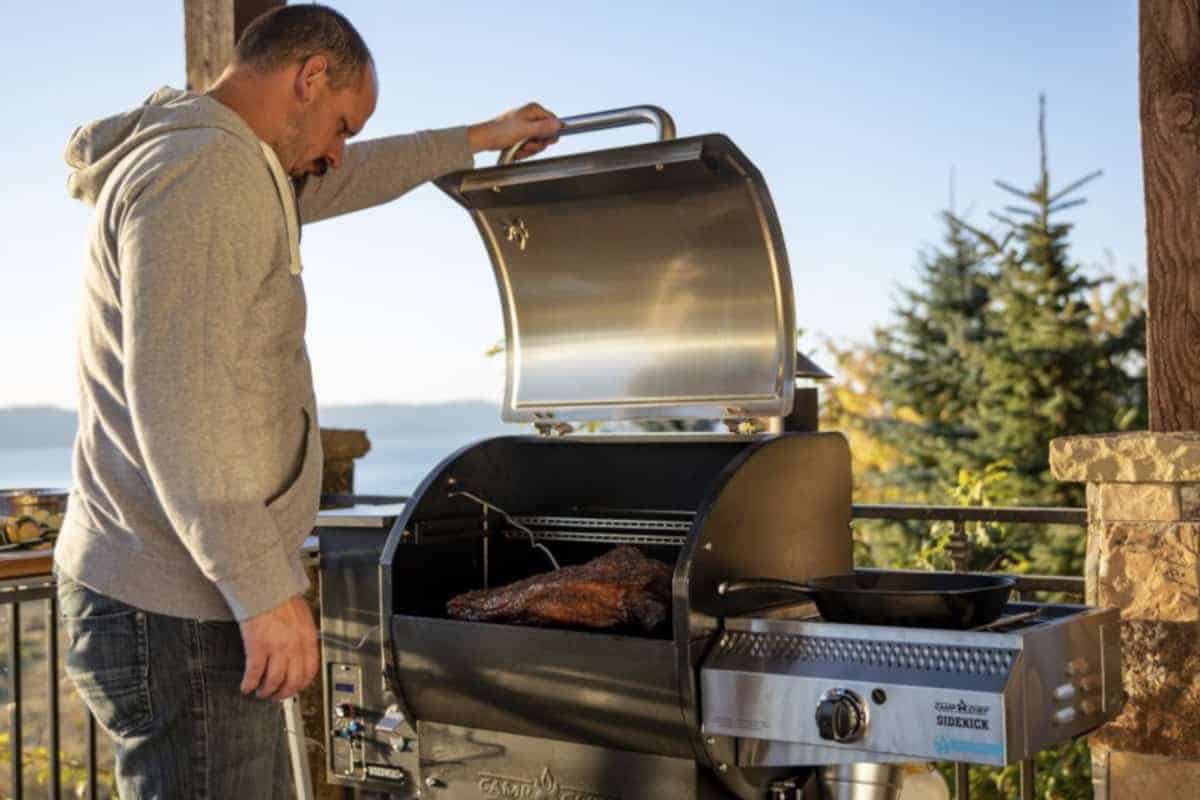
Versatility in Cooking Styles. Can you Smoke as Well as Grill:
Although marketed as ‘pellet grills,’ these are, in fact, smokers that can do some grilling and have historically been known to be quite bad at grilling. However, many newer models can now exceed the temps required for out-and-out grilling and have features to remove baffles and expose the pellet fuel fire for direct-heat grilling over flame. So grilling ability depends on the model … So choose wisely!
Temperatures Range, high and low: Some pellet grills will get hot enough to sear, perhaps as high as 500F, with a few going even higher. At the low-end, sub-200F temperatures are possible on many models.
How is temperature controlled: This is very simple on a pellet grill; set thermostat (usually a digital display is provided) to the temperature you want. The automatic auger adds pellets as needed, and a fan circulates heat and smoke through the cook chamber. That’s it, you’re done.
Learning curve / ease of use: Despite the complexity of the equipment, a pellet grill is exceedingly simple to use. The hopper can be fully loaded each time, so there’s no learning how many pellets to use, and the set-it-and-forget-it thermostat takes the guesswork out of hitting your target temperature.
Convenience: Once you’ve filled the hopper and switched it on, you shouldn’t be more than 10 minutes getting to your set temperature, even if you’ve cranked it up. Clean-up is a breeze; there’s typically a dump mechanism for unused pellets. Grease follows a course to an exterior bucket for collection, and there will be a pullout tray for removing ash.
Pros: Pellets come in a variety of “flavors” for adding smoky goodness to your meat, and there are no messy used coals to deal with. The learning curve is minimal, and you can cook or smoke almost anything.
Cons: Pellets are not always as easy to find as charcoal, so you may need to order them online. Though pellet grills are technically wood-fired, you do require electricity to operate thermostat and the auger.
Average price range: While there are a few options in the neighborhood of $300, they are usually small and/or portable. For a full-size pellet grill, budget yourself somewhere between $400 to $1200.
Should You Buy This Type of Grill? If you don’t love the taste of smoke, do not buy a pellet grill! Adding smoky flavor to anything is what they’re best at. A pellet grill is excellent for providing a range of cooking options from low ‘n’ slow to everyday grilling. They aren’t hard to use, but given the cost and unique nature of a pellet grill, we recommend them for serious grilling fans that love to cook outdoors whenever possible.
What to look for when buying: Avoid thin, flimsy metal and ill-fitting parts — A pellet grill needs to hold its smoke and heat to be effective. Plus, choose a thermostat that you can adjust in small increments for accurate temperatures and offers an LCD.
Electric Grills
For the ultimate in plug-and-play barbecue, you could opt for an electric grill. While reviled by most pitmasters and charcoal enthusiasts, they offer incredible, go-almost-anywhere convenience and utter simplicity.
Flat Top Grills and Griddles
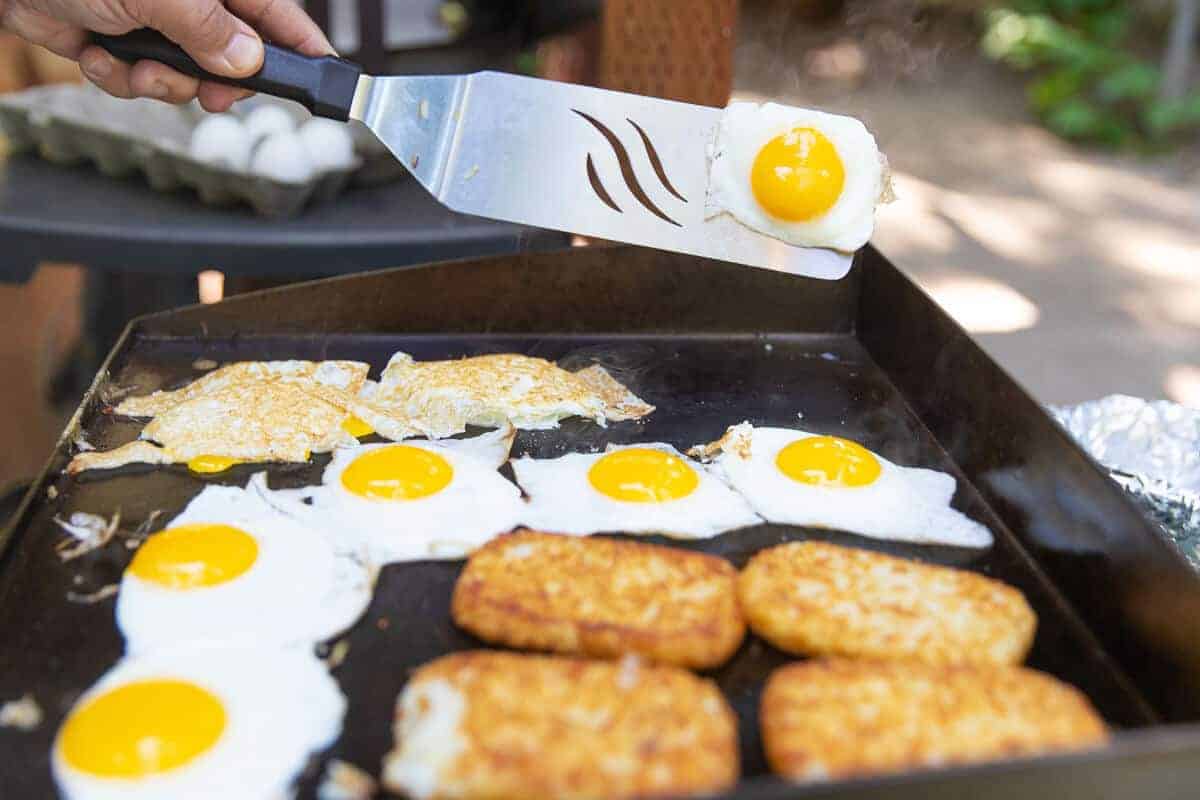
Versatility in Cooking Styles. Can you Smoke as Well as Grill: While you cannot smoke on an electric grill, many have solid cooking surfaces (as opposed to grates), allow you to cook vegetables and other small items with ease. With a griddle-style surface, you can even make things like eggs and pancakes.
Temperatures Range, high and low: A typical electric grill has a temperature range of approximately 250F to 600F.
How is temperature controlled: Set it and forget it is the name of the game — turn the dial to the temperature you want and let thermostat take over. It’s just like using an electric range in the kitchen.
Learning curve / ease of use: What learning curve? There is literally nothing easier to learn how to cook on than an electric grill.
Convenience: It takes as long to start an electric grill as it does to flip the switch or turn the knob. There’s no ignition because there’s no combustion. Electric grills don’t operate at extreme temperatures, but they do heat up quickly. When you’re finished, all you have to do is wipe the cooking surface clean or wash it with a bit of dish soap.
Pros: There’s no dangerous fire or messy charcoal to contend with. Also, there aren’t any fumes or much smoke to deal with, so you can use an electric grill in an enclosed space or even indoors if the weather turns on you.
Cons: Electric grills are usually too small for anything but smaller food items, so forget about that brisket or Boston butt. You can only use one where there’s electricity, of course, and your placement options are limited to the reach of the cord. Also, if the power goes out, the barbecue will be postponed.
Average price range: There are many bargains to be had in this category, and even the upper-end units are not too expensive. To us, $100 – $200 is a reasonable average, with outliers at either end, of course.
Should You Buy This Type of Grill? An electric grill is a good substitute for anyone who lives somewhere where gas or charcoal grills are prohibited. They’re also terrific for anyone who wants to enjoy the outdoor cooking experience and the sizzle of meat on a hot grill but doesn’t want to worry about a gas supply or setting up charcoal. We consider this a casual type of grill.
What to look for when buying: Think about where you plan to use it and how convenient the outlet is; cord length will be a vital consideration unless you have or plan to buy a heavy gauge extension cord. Electric grills have solid cook surfaces, so make sure if there’s an effective grease collection system.
Also, consider how you want to use your grill?
Do you want a portable unit you can take anywhere (anywhere there’s electricity), or do you want to stay at home with a pedestal-mounted unit more reminiscent of a traditional barbecue?
A Note on Hybrid / Combo Grills
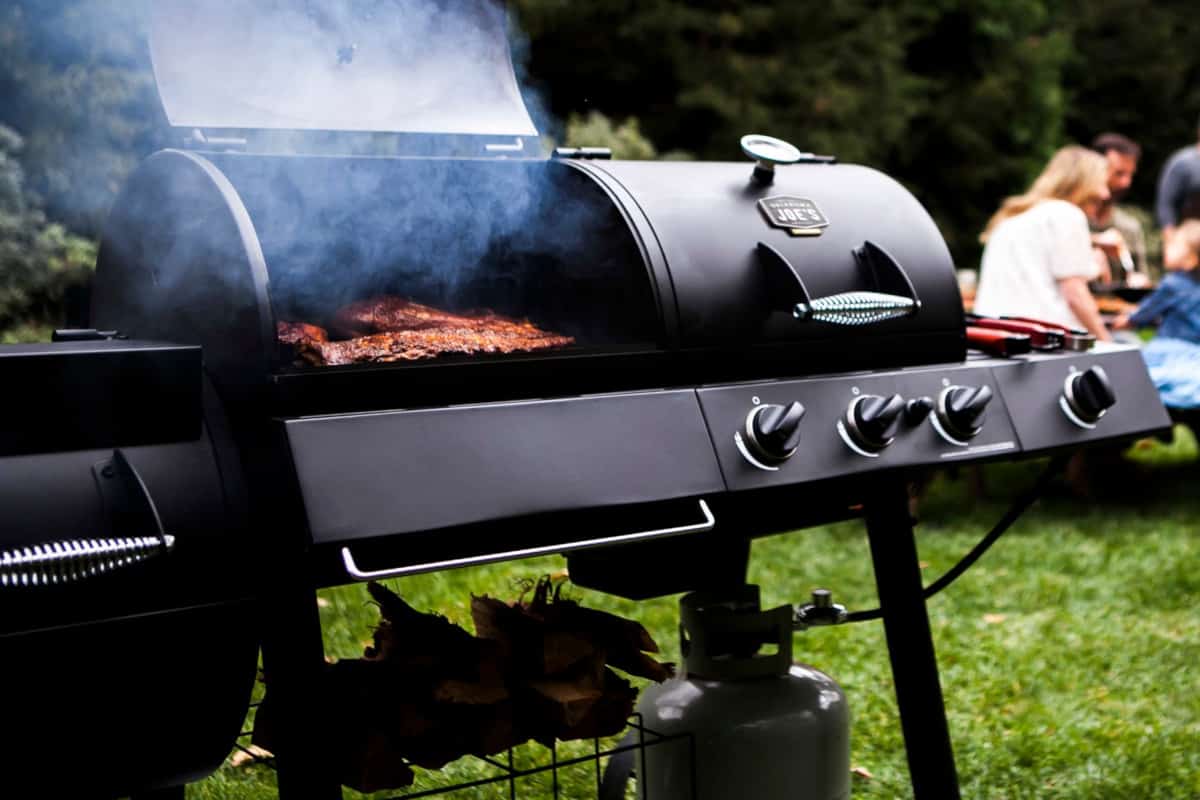
Want more bang for your barbecue buck? Think about a hybrid grill. There are grills out there that run on more than one type of fuel, namely charcoal and gas.
Why would you want one? To get the best of both worlds, of course. With one of these on your patio, you’ll have the option to fire up the gas and cook up some lighter fare with no fuss, no muss. But, should you feel like it, you can enjoy an authentic charcoal grilling experience, including real smoke and its associated goodness, or slow roasting a larger cut.
You could also opt for a combination smoker and grill. We touched on them earlier, but to reiterate, combo smoker/grills allow you to choose between smoking low ‘n’ slow in the smoke chamber and grilling over high heat right in the firebox.
There are too many configurations available to list them all here, but you can expect them to combine the features, benefits, and drawbacks of the dedicated grills we’ve already covered.
Portable Grills
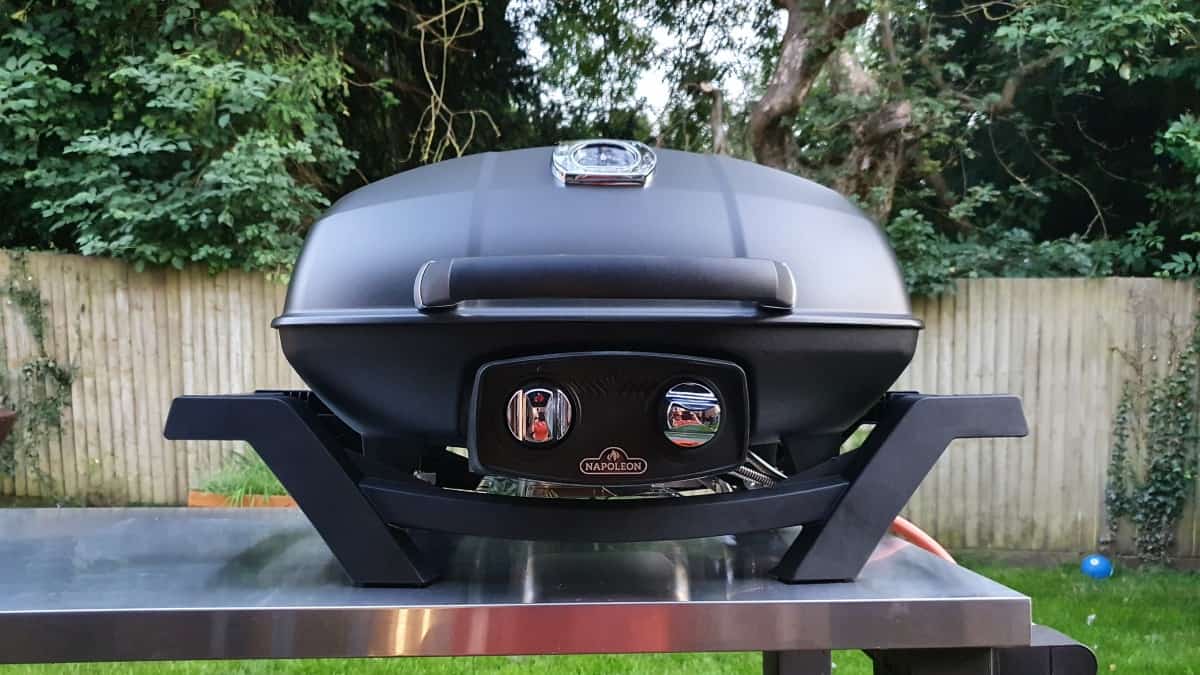
A couple of times, we’ve mentioned portable grills and grilling away from home. Really, it’s a whole separate category, but since they’re not that much different from full-size grills, we won’t go in-depth here.
Portable grills can be found fuelled by propane, charcoal, or electricity. Though they function like the big ones, there are usually compromises made to make them portable that you’ll have to accept. For example, portable propane grills run on smaller canisters, meaning you’ll have to replace them more often. You’ll also find greatly reduced cooking surfaces and usually a lack of extras like side burners or side tables.
On the plus side, they’re usually lightweight and fold down nicely for packing in the trunk, truck, or trailer. Additionally, portable grills are just the right size for folks who lack yard space or only grill for 1 or 2 people at a time.
How to Choose the Right Grill for You?
Now that you know the selection out there, it’s time to make one your own. But which one?
We’ve been dropping clues throughout, but let’s gather our thoughts and help you choose the grill best suited to your style and situation. Let’s break it down into three essential questions you need to ask yourself.
What do You Want to Cook, and How?
Keeping in mind the six categories of grills, think about the food you like already and the food you want to try.
For example, if you’re happy with simple (but perfectly grilled!) stuff like steaks, chicken pieces, chops, burgers, sausages, fish, kebabs, and so on, then maybe an open grill is what you need.
On the other hand, if you love or want to try your hand at roasts and other large cuts, you’ll enjoy the extra cubic inches and temperature control of a covered grill with a lid.
If smoked meat is filling your dreams, a smoker may be your best choice.
Or perhaps you want it all in one package? It sounds like you’re a vessel or ceramic grill customer.
Think very carefully about this. You don’t want to limit yourself to, say, grilling picnic food only and then realizing in a few months that you want to make beer can chicken or pulled pork.
Once you’ve got an idea of what kind of grill will work best for you, move on to question 2, where you can refine your options even further.
What’s Your Fuel Type Preference?
As a refresher, here are the options when it comes to fuel:
- Charcoal
- Propane
- Natural gas
- Wood pellets
- Electricity
If you aren’t allowed to have open flames where you live, then it’s a simple decision – enjoy your electric grill!
For everyone else, consider how much time you want to put into learning to use a particular fuel type and the effort you’re willing to make each time you grill.
That means do you want to fill a hopper with pellets, or load a chimney starter with charcoal and newspaper, or flip an igniter switch?
Do you want to learn about 2-zone cooking with burner tubes or strategically placed coals?
There are no wrong answers, only the answer that’s right for you.
If you want everything clean and simple, choose either propane or natural gas (especially if your home has a gas hook-up already installed). But, if part of the fun for you is really getting hands-on, charcoal is the way.
Also, link your fuel type with the style of grilling (and grill) you prefer. If roasted meat and tender, low ‘n’ slow goodies are your thing, again, you’ll be looking at charcoal, or perhaps pellets. For seared steaks with perfect grill marks, you might want to check out a gas grill with an infrared burner.
Where you plan to grill makes a difference, too. Will you have access to natural gas or electricity? Do you want to pack up and grill away from home sometimes? Not all fuels are suited to all locations, so absolutely keep that in mind.
It’s easy to waffle back and forth on this question. Make a list of pros and cons for each type as you see them and make your choice.
How Large a Grill do You Need / Can You Accommodate?
Once you’ve settled on your grill style and fuel type, it’s time to choose your size. Every kind of grill comes in various sizes; there’s everything from smokers you need a truck to tow to hibachis that will fit in a backpack and everything in between.
There are several factors to mull over when you’re choosing how big a grill to purchase. Uppermost on your mind should be: how much room do I have? You don’t want to order a massive 6-burner grill with side tables only to find there’s no space in your yard large enough to accommodate it.
Measure your available footprint before you choose. Make allowance for safe traffic flow around it and ensure nothing flammable will be in the way beside, behind, or above.
Now, you don’t have to buy the largest grill that will wedge into your outdoor space. If you usually only cook for a few people, that 6-burner I mentioned up there is overkill. Save some money and get a smaller grill. Conversely, don’t frustrate yourself with, say, a 14” kettle grill if you have the whole family over every weekend. It’s not much fun feeding a crowd six burgers at a time.
This is another good time to think about where you plan to grill. If you mostly want to grill away from home, choose something smaller and more portable. Or, pick something large enough for a modest feast at home that you can still pack and take on the road for a home-and-away solution.
The End and the Beginning…
There’s a lot of information to take in when it comes to grills. However, by doing your research and keeping our tips in mind, you’ll end up making the right choice for you.
Hopefully, reading this article (and browsing our other information-laden articles) will be the kick-off to years of grilling pleasure!
If you’ve got any questions we didn’t answer, leave us a comment below, and we’ll address them ASAP. You can also track us down on social media (check the icons below for your choices) for more content or leave a message.
Thanks for picking our not-so-humble site for your grilling info! And thanks in advance for spreading the word to your friends and fam through email, text, and social. We are what you make us!


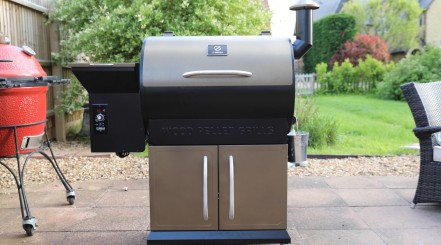
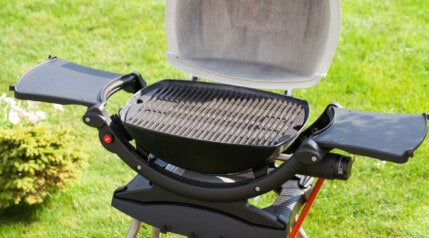
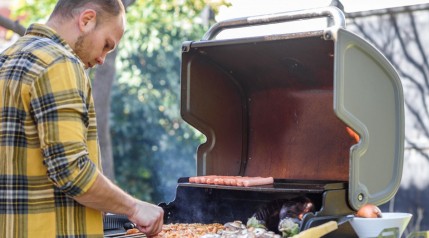

I like how you pointed out the size of the grill you need, and how much room you have to accommodate the grill. It’s significant as this can affect the space you must adjust for your guests.
We plan to have a BBBQ party for my sister’s graduation next week, and purchase grills to use for the reception. I’m glad I came across your article and learned the different types of grills; let me share this with my dad and see how this can help us choose the right grill to buy.
I appreciate you bringing out that some backyard grills feature rotisseries or offer them as add-ons, while some high-end models incorporate an infrared burner specifically for rotisserie cooking. My dad’s birthday is coming up next week and knowing how much he loves the outdoors and cooking, I’m planning of giving him an outdoor kitchen product. Since there’s so much to choose from, I feel like he needs a burner natural gas grill the most since the one he has now is old and rusty. Thanks for the help!